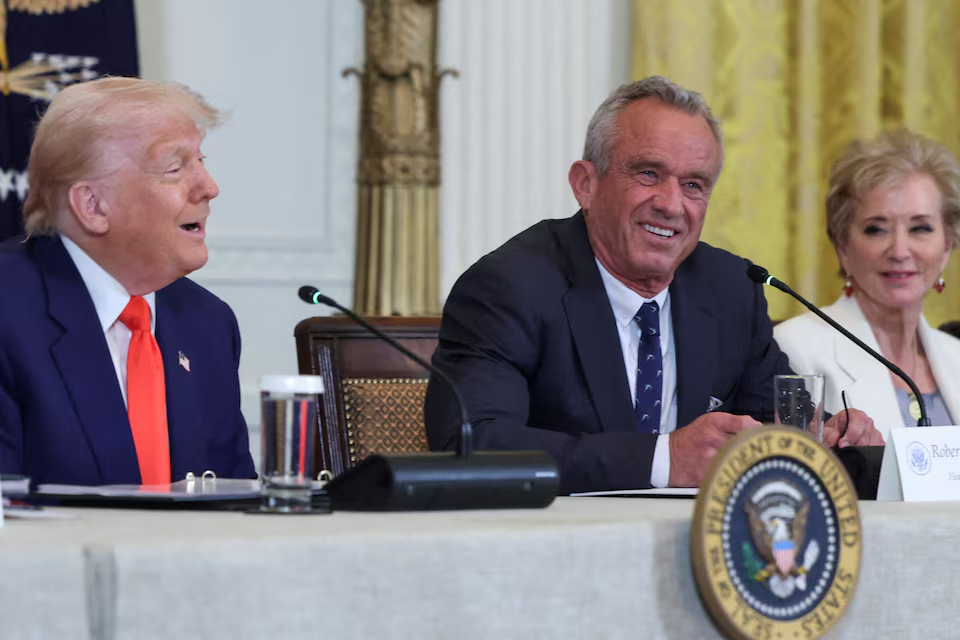U.S. Jobless Claims Slip to 245,000 Yet Highlight Lingering Labor Market Softness
- Jun 18
- 3 min read
18 June 2025

Weekly jobless claim filings in the United States dipped by 5,000 to a seasonally adjusted 245,000 for the week ending June 14, according to the Labor Department. While this modest decrease aligns with economists' forecasts, it leaves claims hovering near the upper thresholds seen earlier this year suggesting the labor market is losing some momentum even as layoffs remain low by historical standards.
While these numbers may indicate some easing, analysts stress that seasonal factors, such as non-teaching staff filing during summer breaks, may artificially inflate the figures. Therefore, elevated claims may persist in the weeks ahead even as underlying business conditions strengthen.
The report paints a nuanced picture of labor market dynamics. Despite the rise in layoffs primarily prompted by President Trump’s expansive tariff measures, overall nonfarm payroll growth has decelerated. For May, employment gains slowed to 139,000 down sharply from the 193,000 added year-over-year. This cooling is signaling that hiring momentum is waning, even though job losses remain contained.
“Layoffs are still historically low,” the Labor Department's report indicates, “but the overall data reveals hesitancy among employers to expand payrolls given economic headwinds.” These concerns stem from both geopolitical tensions, most notably between Israel and Iran and trade policy risks tied to tariffs.
Continuing claims, which measure those collecting longer-term benefits, also decreased by 6,000 to 1.945 million in the week ending June 7. Although this downward move is welcome, the figure remains elevated, suggesting that many unemployed workers are taking longer than usual to find new jobs.
This intersection of still-low layoffs, slowing job creation, and weak rehiring highlights a labor market in transition, comfortable, yet showing vulnerabilities. It reflects the Federal Reserve’s own stance ahead of its monetary policy decision, expected later today, where officials are poised to hold interest rates steady at 4.25–4.50%. These officials continue to monitor the potential economic effects of tariffs and global conflict.
Investors are scrutinizing these labor figures closely, as they dovetail with other softening indicators, including weakening homebuilding permits and faltering business confidence. Data from Goldman Sachs suggests that while the labor market’s strength remains a stabilizing force, uncertainty from tariffs and global events is beginning to dampen hiring sentiment.
Market reaction has been cautious. While the S&P 500 and Nasdaq markets rose modestly ahead of the Fed announcement, the core takeaway is one of policy patience. CME Group data shows markets are pricing in about 46 basis points of rate cuts before year-end, with a 55 percent chance of 25 basis points being slashed in September, an outlook that hinges significantly on forthcoming job and inflation data.
By next week’s labor report release, attention will focus not only on initial claims but also on continuing claims trends, which provide clues about rehiring velocity and longer-term joblessness. Should continuing claims remain elevated, it may signal enduring weakness in worker reentry, information that will be critical for Fed decision-making.
Cumulatively, this week’s jobless claims report reflects a labor market at a precarious crossroad, resilient in surface metrics but exposing subtle cracks. Businesses appear wary, evident in the slowdown in job growth and prolonged unemployment durations. That hesitancy aligns with consumer data showing diminished sentiment amidst economic headwinds.
Looking ahead, the Fed is expected to maintain current rates while awaiting stronger evidence of sustained inflation moderation and clearer labor-market signals. For investors and policymakers alike, the modest dip in jobless claims offers reassurance, but broader malaise persists. The upcoming months may prove pivotal for the labor market, determining whether the economy will regain stable footing or stall under pressure.
Ultimately, this week’s report exemplifies a labor market at a fork in the road, grounded in stable conditions, yet vulnerable to slowing growth. The Federal Reserve, markets, and policymakers will all watch closely for signs of stabilization or further softening as they navigate an intricate landscape of economic risks in the months ahead.



Comments